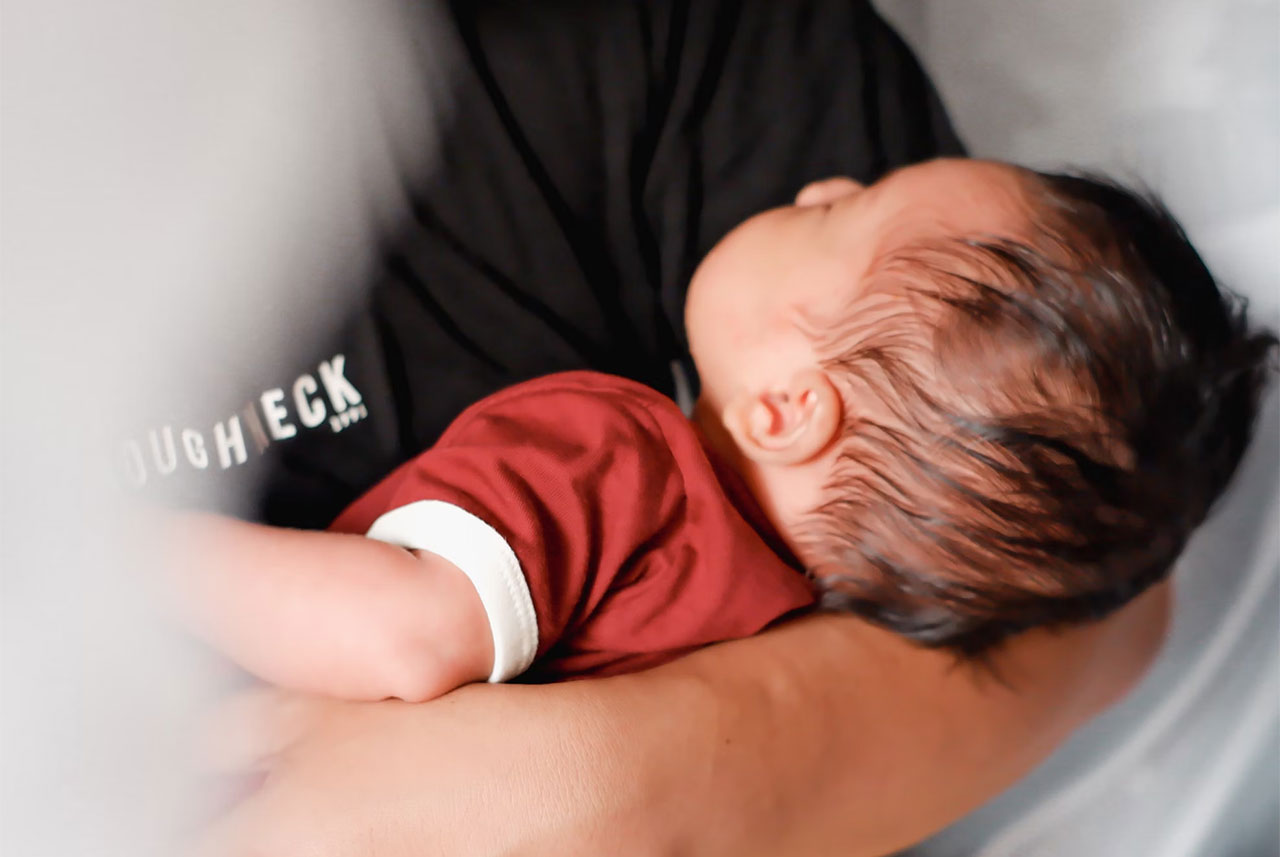Statutory Payments – Neonatal Care Leave
Welcome to the third and final instalment of our statutory pay series. In part one we covered what statutory pay is, the minimum earning thresholds, and amounts etc. In part two we went through how to set up your payroll system and common pitfalls to avoid. And now, in this final part we will discuss some of the key points in handling requests for Neonatal Care Leave, a new right which came into effect on 6th April 2025.
What is neonatal care leave?
Neonatal care leave allows parents to have additional time off to be with a child who is under 28 days old and who is receiving neonatal care.
Neonatal care can include scenarios where a baby is born early, is ill or injured at birth, has a low birth weight etc. In terms of where the baby can receive care, it is not necessarily limited to the neonatal unit of a hospital. It can be provided at home where health care professionals from the hospital are continuing to provide care under the direction of the consultant.
The specifics of how neonatal care is defined can be found in the Neonatal Care (Leave and Pay) Act 2023 as updated by the relevant regulations.
Who is entitled to take neonatal care leave?
To have the right to request to take Neonatal Care Leave the following conditions must be met:
- The child’s neonatal care continues without interruption for a period of at least seven days beginning with the day after the day on which the care starts.
- The leave is for parents who enjoy the status of employee. Therefore agency workers, casual workers or those on a zero hours contract may not be entitled to this right. The position is slightly different in regard to pay where workers may be entitled to receive neonatal care pay.
- The parent must have shared or sole parental responsibility for the child and this includes the mother or birth parent, the father, the partner, civil partner of the mother/birth parent, adopting parents and parents in a surrogacy.
- The parent complies with certain notice requirements.
- The parent is taking the leave to care for the child.
The right to be able to take neonatal care leave arises from the first day of work provided the parent is eligible. Each parent is entitled to a separate amount of leave, including parents who work for the same employer.
The leave is in addition to other types of parental leave and pay and if the parent is already on that leave or has booked to take it, the Neonatal Care Leave can be taken afterwards (subject to the notification requirements). For example, Ben has booked paternity leave for when his child arrives. The child is however taken into neonatal care for two weeks at birth. During the first two week’s Ben is on paternity leave as pre-booked. Once this is over, as Ben has accrued two week’s neonatal care leave, he can now take eave once the paternity leave is over.
If neonatal care does not last past the first seven consecutive days, then neonatal care leave entitlement does not arise. Here employers can consider other options of leave and whether this is paid or not.
Multiple births
Where there are multiple births from the same pregnancy such as twins, then Neonatal Care Leave can accrue in respect of more than one child up to a maximum of twelve weeks. However, if for example the twins were receiving care at the same time, then the leave can only be accrued in respect of one child during that period.
For example, Jenny gives birth to twins. Both are admitted to neonatal care for two weeks at the same time; therefore Jenny only accrues two weeks lave.
However, if Twin A is admitted to neonatal care for two weeks after their birth and Twin B is taken home, Jenny accrues two weeks leave for Twin A. After Twin A comes home, Twin B is then admitted to neonatal care for one week. Jenny therefore accrues another week of leave and accrues a total of three weeks neonatal leave.
How much leave can be taken?
As referenced eligible parents can take neonatal care leave once their child has been in neonatal care for at least seven consecutive days.
The minimum period of leave is one week. However, they can take up to a maximum of twelve weeks leave. This will be dependent on how long their baby is receiving neonatal care for.
For example, Baby X is born on 2nd February and is admitted to neonatal care immediately. The seven consecutive days commence from 3rd February and therefore ends on 10th February. If Baby X is in neonatal care until 17th March (6 weeks), the parents will accrue six weeks of neonatal care leave in total.
If a parent is not already booked on family or carer’s leave during the first seven days of the baby needing neonatal care, then they may need to look to use alternative sources of leave such as annual leave or special leave or time off for dependents.
For example, Jack’s child is due at the end of June. The child arrives early on 1st June and is admitted to neonatal care. Jack is not on paternity leave as the child is early and he is not entitled to neonatal leave for the first seven consecutive days, i.e. not until 9th June. For the period to 9th June he will need to speak to his employer to determine what leave he can take. Thereafter he can take Neonatal Care Leave up to a maximum of twelve weeks and then he can look to use his paternity leave at some point in the future.
Leave is also be taken in two tiers!
Tier 1 period – begins with the day the child starts receiving neonatal care and ends with the seventh day after the day the child stops receiving neonatal care.
Tier 2 period – the period outside of tier one period beginning with the end of the tier one period and ending with the end of 68 weeks from the date of the child’s birth.
How does this work?
The ACAS guidance provides the example of Pat and their baby.
Tier 1 leave – Pat’s baby is born early and is in neonatal care for four weeks in total from birth. Pat takes two weeks of paternity leave straight after the birth and then two weeks of neonatal leave when the paternity leave ends. Pat still has two weeks neonatal care accrued to be taken at a later date.
Tier 2 leave – Pat’s baby is now home after four weeks in neonatal care. Pat as mentioned has accrued two weeks of untaken neonatal care leave. Pat must take the two week’s leave in one go (i.e. cannot have two separate one week blocks). So Pat gives notice to take these two weeks in one month’s time to allow Pat to continue the baby’s at home care
What notice must an employee give to take neonatal care leave?
If the parent wishes to take neonatal care leave in the Tier 1 period (as described above), then the parent must tell their employer before their first day of leave. For example, a child goes into care on 1st March, the parent must inform their employer of their intention to take neonatal leave before 9th March. The notice does not have to be in writing.
If an employee has accrued neonatal leave but not taken it, for example they were on maternity leave or paternity leave and the baby is no longer receiving neonatal care, that accrued leave can be taken any time prior to the end of 68 weeks from the date of birth (Tier 2). Notice to take leave in the Tier 2 period must (subject to the employer’s agreement) be in writing, but the length of notice varies with the amount of accrued leave to be taken. For a single week of leave – 15 days’ notice prior to the first date of leave must be given. For two or more consecutive weeks, 28 days’ notice must be given.
For example, Jenny who had the twins has accrued 3 weeks of neonatal leave. She was on maternity leave at the time the twins were receiving neonatal care and so has not taken the leave she accrued. The twins are now out of neonatal care so Jenny can opt to take the leave in the Tier 2 period i.e. before the end of the 68th week from their birth. Jenny has decided to take the full 52 week maternity leave period and add these three weeks to the end of her maternity leave. She can do this as it is still within the 68 week period. To be able to take the leave Jenny must therefore provide 28 days’ notice prior to the first leave date to her employer.
What should the employee include in the notice?
The employee should specify their name, child’s date of birth, in cases of adoption the date the child is placed, the date the child start to receive neonatal care, the date the neonatal care has stopped (if it has), the date the employee wishes the leave to start, the number of weeks of leave , confirmation that they are still caring for the child and that they satisfy the requirements of parental or personal relationship requirements.
Staying in touch with employee on leave
Employers should where possible, stay in touch with their employee. If nothing else to check in on their health and what news if any they would like to be shared with their colleagues.
Remember there is a duty of confidentiality around the child being in neonatal care and so this should only be shared with staff if the employee has consented to such news being shared.
It can be that employers arrange to speak with a close contact of the employee in the first instance.
Entitlement to Neonatal care pay
Whilst the entitlement to take leave is a day one right, the right to pay is dependent on the following criteria being met:
- They meet the parental or personal relationship requirements.
- They need not have the status of employee but must have been in employed earner’s employment with an employer for a period of at least 26 weeks ending with the relevant week.
- They must have been entitled to be in that employment at the end of the relevant week.
- For the period of 8 weeks ending with the relevant week, have normal weekly earnings that are not less than then lower earnings limit, currently £125 a week from 6 April 2025.
What is the relevant week?
The relevant week is dependent on the other parental pay the parent is entitled to.
If they are entitled to statutory maternity or statutory paternity pay, the relevant week is the 15th week before the expected week of childbirth.
If they are entitled to statutory adoption pay or statutory paternity adoption pay, the relevant week is when they are notified of being matched with the child.
For any other pay for family leave, the relevant week is the one immediately before the week that neonatal care starts.
When should an employee give notice of wanting to take neonatal care pay?
Tier 1 leave – notification of wanting to take neonatal care pay must be given within 28 days starting with the first day that the neonatal care pay is being claimed. So parents do not have to give notice for pay at the same time as they take the leave.
Tier 2 leave – the notice requirements are the same for requesting leave, so should ideally be done at the same time – 15 days before the first day for one week’s leave and 28 days before the first day for two weeks or more.
Conclusion
Whilst this is a detailed note, there are many more nuances to this legislation which the note has not covered, for example some specifics around rights and obligations during the leave and after it ends such as holiday entitlement, the right to return to their role, or what happens if another types of statutory leave is interrupted and the relationship with neonatal care leave – what gets taken when!
WCL can therefore help you in terms of giving guidance on these more detailed requirements. We can also provide you with a Neonatal Care Leave Policy which can be added to your suite of policies or employee handbook. This may be of particular interest if you are considering paying more than the statutory entitlement to pay.
If you’d like to know more, please get in touch. We’d love to hear from you.





